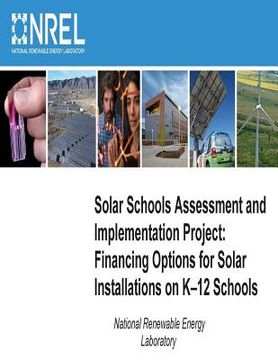Share
Solar Schools Assessment and Implementation Project: Financing Options for Solar Installations on K-12 Schools (in English)
National Renewable Energy Laboratory (Author)
·
Createspace Independent Publishing Platform
· Paperback
Solar Schools Assessment and Implementation Project: Financing Options for Solar Installations on K-12 Schools (in English) - National Renewable Energy Laboratory
$ 11.96
$ 14.95
You save: $ 2.99
Choose the list to add your product or create one New List
✓ Product added successfully to the Wishlist.
Go to My WishlistsIt will be shipped from our warehouse between
Tuesday, July 30 and
Wednesday, July 31.
You will receive it anywhere in United States between 1 and 3 business days after shipment.
Synopsis "Solar Schools Assessment and Implementation Project: Financing Options for Solar Installations on K-12 Schools (in English)"
Solar energy systems installed on public schools have a number of benefits that include utility bill savings, reductions in greenhouse gas emissions (GHGs) and other toxic air contaminants, job creation, demonstrating environmental leadership, and creating learning opportunities for students. In the 2011 economic environment, the ability to generate general-fund savings as a result of reducing utility bills has become a primary motivator for school districts trying to cut costs. To achieve meaningful savings, the size of the photovoltaic (PV) systems installed (both individually on any one school and collectively across a district) becomes much more important; larger systems are required to have a material impact on savings. Larger PV systems require a significant financial commitment and financing therefore becomes a critical element in the transaction.In simple terms, school districts can use two primary types of ownership models to obtain solar installations and cost savings across a school district. The PV installations can be financed and owned directly by the districts themselves. Alternatively, there are financing structures whereby another entity, such as a solar developer or its investors, actually own and operate the PV systems on behalf of the school district. This is commonly referred to as the "third-party ownership model." Both methods have advantages and disadvantages that should be weighed carefully.
- 0% (0)
- 0% (0)
- 0% (0)
- 0% (0)
- 0% (0)
All books in our catalog are Original.
The book is written in English.
The binding of this edition is Paperback.
✓ Producto agregado correctamente al carro, Ir a Pagar.

